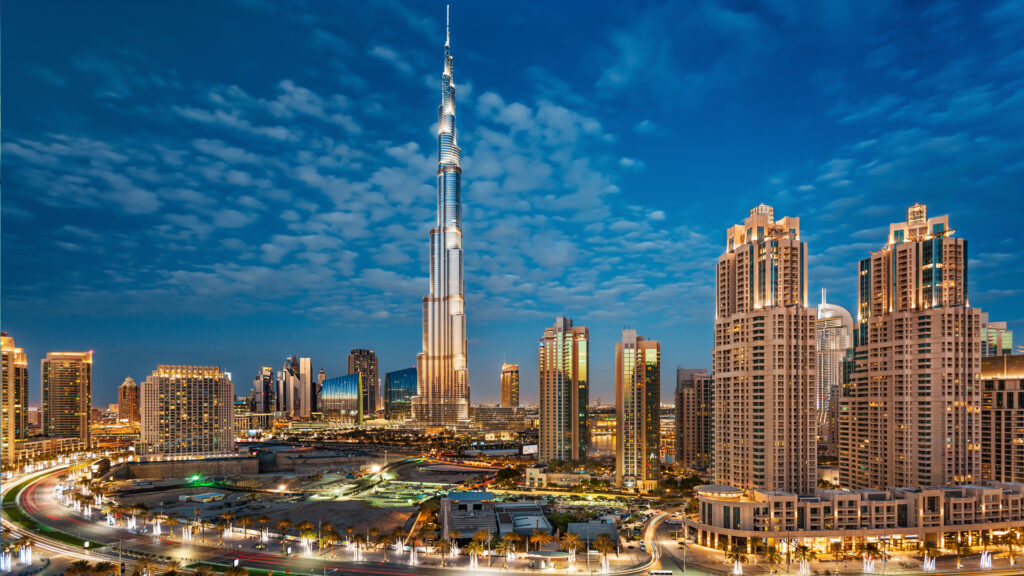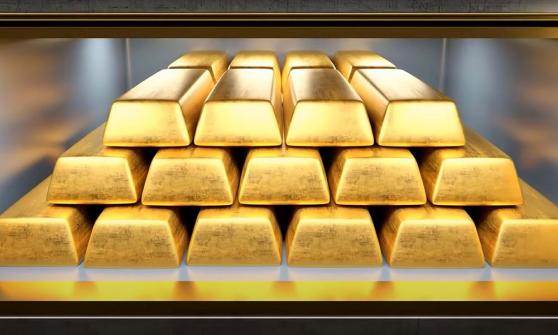1. Overview
The United Arab Emirates (UAE) is a federation of seven monarchies: Abu Dhabi, Dubai, Sharjah, Ajman, Umm Al Quwain, Ras Al Khaimah and Fujairah. UAE has well‑established infrastructure, a stable political system and one of the most liberal trade regimes in the Gulf region. It is increasingly attractive to businesses from around the world as a place to do business and as a hub for the region. According to the Heritage Foundation, UAE is ranked 1st out of 14 countries in the Middle East/North Africa region in terms of economic freedom. UAE is a high‑income country with a GDP per capita of over US$44,000 in 2021.
While the oil industry continues to dominate the UAE economy, the government is taking steps to reduce its dependence on oil. In 2010, the UAE launched Vision 2021, a programme to forge a sustainable and diversified economy that will be flexible in adopting new economic models and will capitalise on global economic partnerships. The programme has achieved notable progress in key socio‑economic aspects including healthcare, education, sustainability and infrastructure sectors.
“We the UAE 2031” further builds on Vision 2021 to continue the development path on economic diversification and improvements in livelihood of the Emiratis, including aims such as generating more non‑oil exports, raise the contribution of tourism sector as well as accomplishing a world leading position in terms of quality of life and attracting talents.Real GDP growth stood at 5.1% in 2022, notably higher than the 3.8% in 2021.
Looking into 2023, the UAE economy might face headwinds such as global economic slowdown, geopolitical tension and high domestic interest rates. Nonetheless, UAE’s non‑oil sectors such as real estate, tourism, hospitality and logistics are expected to remain robust. UAE may also see a moderate inflation rate (3.6% as forecasted by the IMF) compare to high inflation in other advanced economy. Taking into account the strong base in 2022, IMF is projecting a real growth of 4.2% for UAE in 2023, which is the fastest among the GCC countries.

2. The Seven Emirates
2.1 Abu Dhabi
Abu Dhabi is the largest emirate in the UAE, occupying 84% of landmass. The capital of UAE is located in Abu Dhabi City. The Ruler of Abu Dhabi is also the President of the UAE. According to UAE’s estimates, Abu Dhabi had a population of 2.9 million in 2016, where approximately only 550,000 of them were UAE nationals and the remaining were expatriates.
Thanks to abundance of oil and natural gas reserves, Abu Dhabi has the resources to develop herself into a rich and wealthy emirate. Nonetheless, the emirate has undergone a significant transformation by investing in infrastructure, tourism, health and education etc., to diversify sources of economic growth and reduce reliance on energy exports.
Among the heavily invested sectors, tourism is playing a major role in Abu Dhabi’s economy. Besides offering luxury resorts and business hotels, Abu Dhabi also positioned herself as a centre of sporting events and cultural experience. World class sporting events such as Abu Dhabi Golf Championship and the Formula One Abu Dhabi Grand Prix are held in the emirate. In addition, Abu Dhabi also has multiple museums and natural wonders such as Sheikh Zayed National Museum, Louvre Abu Dhabi, Liwa oasis and the garden city of Al Ain.
2.2 Dubai
Dubai is the second largest emirate in the UAE, occupying 5% of its landmass. The Ruler of Dubai is also the Prime Minster of the UAE. According to Dubai’s estimate, the Emirate has a population of 3.5 million in 2021, in which 3.2 million are non‑Emiratis.
Despite the discovery of oil in the 60s greatly transformed the emirate, Dubai is no longer oil reliant. Dubai took a strategic decision to diversify her economy since the late 80s. Today, Dubai is relying heavily on trade, tourism, services and financial sectors. Tourism in particular, on top of all the top‑notch shopping centres entertainment and dine venues, Dubai is famous for having the world’s renowned the sail‑shaped Burj Al Arab hotel as well as the world’s tallest skyscraper, the Burj Khalifa.
On the finance front, Dubai is also the home of Dubai Islamic Bank and Dubai Financial Market, which are the first Islamic bank and first global Shari’a complaint exchange.
In addition, Dubai is a trading hub as well as the gateway to the Middle East and Africa thanks to the geographical advantage that Dubai creek is a natural harbour. To further promote Dubai as a business hub, Dubai has started setting up free zones since 1985 and the emirate now houses 24 free zone. Each of these free zones are differed by their focused industry, and they generally offer incentives to overseas business such as 100% foreign ownership, 0% corporate tax and no restriction on capital repatriation etc.
2.3 Sharjah
Sharjah is the third largest emirate. According to the Sharjah Census 2015, the Emirate had a population of 1.4 million where 175,000 of which were Emirati nationals.
The Sharjah economy is empowered by entrepreneurship and innovation, having almost 45,000 SMEs mainly in sectors such as manufacturing, tourism, education, healthcare and business services etc. Sharjah’s 19 industrial areas contribute to more than 48% of UAE’s gross industrial output.
Leveraging on the rich architectural heritage and cultural wealth, Sharjah developed the arts, culture and tourism industry. In 1988, the United Nations Educational, Scientific and Cultural Organization (UNESCO) named Sharjah as “The Cultural Capital of the Arab World”. Today, Sharjah is home to largest number of natural reserves in the UAE as well as nearly a quarter of all of the UAE’s museums.
2.4 Ajman
Ajman has the smallest land area among the seven emirates. Ajman’s estimated population in 2017 was around half a million. Ajman Port and Ajman Free Zone are the main drivers of the emirate’s economic growth. Being the smallest emirate, the Ajman government aims to build a distinctive government that promote green economy and a happy society, which also aligns with the strategic goal of the UAE.
2.5 Umm Al Quwain
Umm Al Quwain is the second smallest and least populated emirate. Population of UAE nationals in the emirate in mid‑2010 was estimated to be less than 20,000.
Agriculture is the important sector in this emirate’s economy. In particular, fishing is the key contributor to the Umm Al Quwain economy and the emirate exports seafood to Europe and Middle East market. Umm Al Quwain is also home to the first poultry farm in UAE which is a key supplier of poultry and dairy products to the local market.
On the tourism front, the emirate is home to Dreamland Aqua Park, the largest water park in the UAE.
2.6 Ras Al Khaimah
Ras Al Khaimah is the fourth‑largest emirate in the UAE with an estimated population of 345,000 in which half of them are UAE nationals.
Ras Al Khaimah also set up free zone to attract a variety of foreign business and investments. Ras Al Khaimah Economic Zone contributed to developing the emirate into a manufacturing hub. Output ranges from construction materials to ceramics and pharmaceuticals.
In particular, RAK Ceramics is one of the largest ceramic manufacturers worldwide, employing 12,000 employees. The largest pharmaceutical manufacturer in the MENA region – Gulf Pharmaceutical Industries, is also domiciled in Ras Al Khaimah.
2.7 Fujairah
Fujairah has a population of 256,000 according to 2019 mid‑year population estimates. The emirate is the only emirate in the UAE that is located completely on the eastern coast along the Gulf of Oman.
Leveraging on the advantage of facing the east coast of Gulf of Oman, Fujairah Free Zone facilitates logistics of imports from across the Indian Ocean.
Thanks to the easterly location, Fujairah’s climate is more comfortable, leading to large amount of weekend visitors.
3. Trade Policies
- The United Arab Emirates (UAE) has been a member of the World Trade Organization (WTO) since 10 April 1996 and a member of the General Agreement on Tariffs and Trade since 8 March 1994.
- The UAE is a member of the Gulf Cooperation Council (GCC) alongside Kuwait, Oman, Saudi Arabia, Bahrain and Qatar. It is part of a single market and customs union with a common external tariff (CET). There is a single point of entry where tariffs are collected once imports enter the GCC. Goods imported into the GCC area can be freely transported throughout the region without paying additional tariffs, except for certain sensitive goods.
- The average Most Favoured Nation (MFN) applied tariff rate in 2021 on agricultural products was 6.1%, while that for non-agricultural products was 4.6%. The average rate of all products was 4.8%.
- Generally, a customs duty is imposed on the cost, insurance and freight value of imports to the UAE from non-GCC countries.
- Some goods are subject to excise tax introduced in the UAE in 2017. The tax applies to both locally manufactured and imported goods. The applicable tax rate is 50% for carbonated drinks and beverages with added sugar or sweeteners; and 100% for tobacco products, energy drinks, electronic cigarettes (with or without nicotine or tobacco) and the liquids used in them.
- A 5% value-added tax (VAT) was introduced in the UAE on 1 January 2018, applying to most goods and services. Some goods and services are subject to a zero-rated VAT, including those exported outside the VAT-implementing GCC member states, international transportation, crude oil or natural gas, the first sale of residential buildings and other specific areas.
- Importing and exporting in the UAE requires a trading licence and a trader code, which is available from the customs department of each emirate and is valid throughout the UAE.
- Imports of all live animals, animal products (except food products of animal origin) and fodder need an import permit issued by the Ministry of Climate Change and Environment. Additionally, all live animals, animal products, plants and plant products are subject to quarantine requirements and need to be accompanied by health certificates.
- Certain goods are prohibited or restricted from entering the UAE. Prohibited products include live swine and other products prohibited on security, health and safety grounds. Restricted products include pig meat products and alcoholic beverages, which require import licences. Certain medicines can be imported or exported only after receiving the necessary permits from the authorities.
- Import of most single-use plastics such as plastic shopping bags, regardless of the material used, will be prohibited starting from 2024. More single-use plastic products import such as soft-drink cups, spoons, forks and straws will also be prohibited starting from 2026.
- The United Arab Emirates (UAE) Ministry of Foreign Affairs and International Cooperation (MoFAIC) has introduced attestation fees for international imports from 1 February 2023. All goods imported into the UAE worth AED10,000 (US$2,723) or more must be accompanied by an invoice attested by the ministry

4. Trade Agreement
Active
- Gulf Cooperation Council (GCC)
- GCC-Singapore
- GCC-European Free Trade Association (EFTA)
- India-UAE CEPA
- Morocco-United Arab Emirates
- Pan-Arab Free Trade Area (BAFTA)
- UAE-Indonesia CEPA
- UAE-Türkiye CEPAC
Signed But Not Yet In Effect
- Trade Preferential System of the Organization of the Islamic Conference (TPS-OIC)
Under Negotiation
- GCC-Australia
- GCC-China
- GCC-India
- GCC-Japan
- GCC-Mercosur
- GCC-New Zealand
- GCC-Pakistan
- GCC-South Korea
Suspended
- GCC-EU
Source: WTO Regional Trade Agreements database, UAE Ministry of Economy

